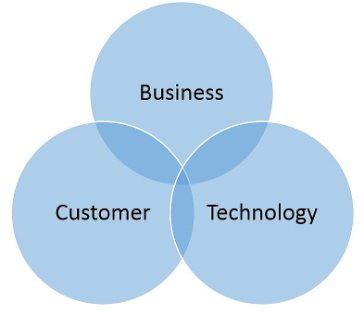9 Guiding Principles for Navigating Multichannel in Healthcare
We look at 9 guiding principles we feel should be considered with multichannel marketing strategy.

The aim of successful multichannel marketing is simple – to deliver, through the use of integrated, data-informed, customer-centric marketing:

The RIGHT message, to the RIGHT customer, at the RIGHT time, through the RIGHT channel is something we’ve all heard before, and some may argue are tired of hearing. The interesting thing is this: previously, this statement was nothing more than an aspirational goal of multichannel, however, now it’s an achievable reality.
In order to leverage every asset when planning your journey through multichannel, here are the 9 guiding principles we feel should be considered with multichannel marketing strategy:
1. There is no silver bullet
Multichannel doesn’t have a one-size fits all approach; this is due to large variations in channel effectiveness and/or customer demand across a region.
2. Go Digital, or Go Home!
Digital channels may once have been consider an ‘add-on’ to the wider off-line marketing plan; today, they are an integral aspect of any marketing strategy, and should not be overlooked. More critically, digital channels should integrate with the efforts of your sales force.
3. Customers dictate the channel
Understanding the precise information need based on the customer’s relationship with a particular service or product should determine the channel used.
4. The need is now
Although pharmaceutical marketing cannot begin until product approval has been granted (usually after phase II or phase II clinical trials) physicians, payers or pharmacists will begin looking for information as soon as they are interested, investing time based on its potential value to them. Social listening should make up part of your multichannel planning sessions; find out what your customers are saying, where they’re saying it, and how they’re digesting information. This can help you deliver the message in a format that will encourage engagement.
5. People are a channel
Communication (mainly face to face) between healthcare professionals of all specialities is the prime traditional manner for information and experiences to cascade. We need to understand and work with this natural cascade; understanding what information your audience is looking at will provide valuable insight, ensuring the next content shared is relevant.
6. Look for leverage
The deficit between a company and its competitors will not be made up by replacing one high-cost/high-impact channel with another high-cost/high-impact channel. Opportunities need to be found in order to leverage a channel mix that maximizes impact and efficiency.
7. Customer-facing teams are central
To ensure that a consistent customer brand experience is maintained, cross-functional integration and information sharing between customer-facing team members is crucial, especially where it can add value to across multiple groups including: payers, sales reps, etc.
8. Validate and optimize
The pharmaceutical industry has a tendency with digital to: launch late, forget, and then replace. Maximize the efficiency and impact of your tactics by implement a robust, iterative programme of Measure, Learn, and Optimize!
9. Technology is catching up!
For too long, marketers have been chanting the mantra ‘right message, right customer, right time, right channel’, whilst knowing that this has only really been possible through customer-facing staff. Truly integrated multichannel has more often than not, been more of an aspirational goal rather than an achievable reality. Recently, this has changed; platforms and systems now exist that continuously learn from customer behaviour, allowing us to provide tailored content and services through tailored channels - both online and offline.
It is, therefore, vital when planning that you understand your technological capabilities and the associated roadmap, and the impact this will have on your multichannel plan.
- Having a solid business strategy defines the direction your multichannel plan in order to achieve your business goals.
- Understanding your customer ensures your plan meets their need.
- Identifying technology requirements helps put into perspective the feasibility of your plan, and highlights areas where technology needs to catch–up in order for you to achieve goals.

If you want to know where you go from here, download Blue Latitude's eBook ‘Where now? 3 Steps to Navigating Multichannel in Healthcare’ to learn more about what to consider when planning your multichannel campaign.
Blue Latitude are attending the Multichannel Marketing Summit on 17th and 18th of September, in London. For more information, click here. If you want to find out how you can excel in multichannel come to our workshop, and pop by our stand.
